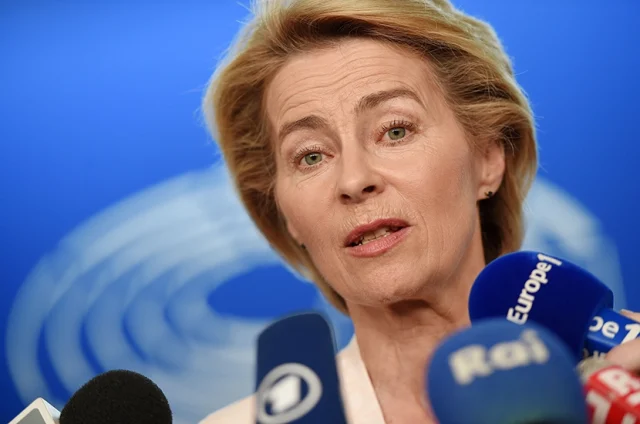
In the aftermath of the Covid-19 crisis, the European Union decided to embark on its famous NextGenerationEU (NGEU), a post-pandemic recovery programme that has to be fully reimbursed by 2058.
There is a certain sarcasm in the very name of the programme, as it will be for the next generation of member States nationals to pay it. More particularly, main principal repayments will start from 2028, as a new cohort of current students begin to work.
A briefing recently published by the Policy Department for Budgetary Affairs in the European Parliament, dealing with the long-term borrowing cost bill related to NGEU, signals its financial weaknesses.
First and foremost, the projection of 10-year benchmark yields for the EU and selected issuers shows a complete lack of planification on behalf of the European Union with regards to borrowing costs, even in the short term: from June 2021 to June 2023, the borrowing costs have risen very significantly, that is, more than 3%.
On the other hand, the briefing demonstrates that the European Union has displayed clear unreliability in financial markets as a large-scale issuer, since the European Commission announced an intention to issue bonds well over what EU countries have later requested for disbursement. Less than half of the member States, namely thirteen out of the total twenty-seven, have requested loans through the joint EU borrowing facility.
In absolute terms, the European Union intends to borrow around €421 billion before the end of 2026 to fund non-repayable support to EU member States. Therefore, both the interest and the principal of this debt will have to be covered by the EU budget, from now until 2058, when the debt must be fully reimbursed.
The briefing suggests that interest rates will remain relatively stable until the end of 2030 and could then decrease slowly and stabilise below 2% in the long run. However, there is a 50% probability that the interest rate reaches 3.4% in 2058, in which case financing costs of NGEU would almost double with regards to the predictions surrounding current discussions around EU budget increase.
Worse than that, in order to guarantee a 90% probability on the amount of EU borrowing costs with a long-term view up to 2058, the briefing suggests a potentially maximum interest rate of 6.2%, which would mean more than triple of the current EU budget discussions.
What seems clear is that there will be a sharp increase of yearly interest costs at least for the next ten years. In a moderate scenario, the projected annual and total interest costs borne by the EU in 2058 would amount to €221.8, over half of the capital borrowed by the EU to fund its non-repayable support to EU member States.
The situation would look even worse in a worst-case scenario, where the total interest costs could reach €410.2 billion, barely 100% the capital, or double the funds borrowed by the EU to fund EU member States grants.
In total, the briefing suggests that between €582 billion and €715 billion will most probably have to be spent over the whole period 2023-2058 by the EU budget to pay interest and to reimburse the debt for NGEU non-repayable support to member States. From this fact, two alternatives arise necessarily: either cutting funds for other EU priorities or else expanding the Union’s budget.
The second alternative implies further dark clouds: How would that expansion be funded? The Von der Leyen Commission has proposed, on top of the polemic carbon Emissions Trading Scheme and Carbon Border Adjustment Mechanism, a temporary [?] tax on companies’ profits.
But why companies and their shareholders should have to pay for the Union’s recklessness remains to be seen. On top of that, the briefing warns that the Emission Trading Scheme already needs to finance other EU funds, so that the amount which could be used to service NGEU debt would be reduced substantially.
Under such obvious weaknesses, it is no wonder that some national governments regard the whole context with strong skepticism.
Source of image: The Spectator



 Subscribe
Subscribe